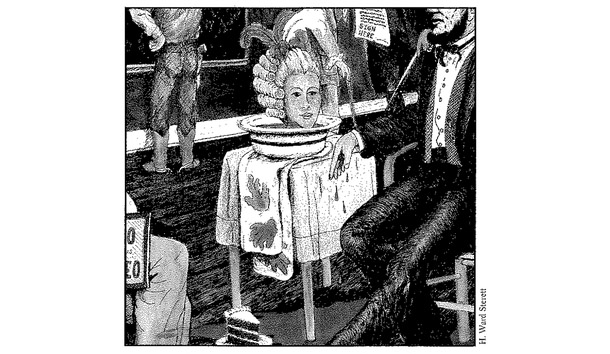At the dawn of the 21st century, few of today’s public (or private) school students would argue with you if you told them that the United States of America was founded upon the principle, proclaimed in the Declaration of Independence, that “all men are created equal.” They would offer no argument, perhaps, except that they thought that statement was in the Constitution, not the Declaration.
If Alan Keyes, considered by many conservatives to be their paragon, were teaching your son’s history class, he would encourage this particular confusion, precisely because the platform of his “Declaration Foundation ” states that the Constitution is properly interpreted through the lens of the Declaration. For the average American, conservative or liberal, that makes sense. However, for the tiny remnant still familiar with the debates surrounding our republic’s founding, that makes as much sense as saving that the Torah can only properly be seen through the lens of Elijah’s rants before the prophets of Baal.
How exactly do we read the Constitution objectively in the light of our greatest propaganda document, the Declaration of Independence, without reading in our own interests? There are those who believe that the federal government should exert absolute control over every abortion because our nation was founded upon the principle of the “right to life.” There are also those who believe that the federal government should exert absolute control over abortion, guaranteeing its safety, legality, and frequency, because our nation was founded upon a “right to the pursuit of happiness.” Christian conservatives remind everyone that the Founding Fathers claimed it was none other than God Who endowed us with those rights. Liberals then counter with the odd notion of “separation of Church and State” allegedly held by those same Founding Fathers.
When we observe this and other facets of our quadrennial national conversation, we are witnessing the triumph of Jacobinism in America. The threefold principle of the French Revolution—”liberty, equality, and fraternity”—has been beaten into the consciousness of Americans for so long that it has polluted the entire pond of American politics and culture. Neither the “liberal” Democrats nor the “compassionate” conservatives have escaped the poison.
Unlike the French and Communist Revolutions, American Jacobinism has yet to degenerate into its own large-scale reign of terror—although the Branch Davidians might disagree. On the contrary, we never seem to hear the end of our success story—the booming economy, continually falling crime and illegitimacy rates, our children’s improving test scores. It is still difficult for us to imagine U.S. tanks rolling down the streets and over dissenters in Chicago or Detroit, despite their presence in Yugoslavia or Iraq. What accounts for the steady success of Jacobinism in America, in light of its violent rise and decline in the rest of the world?
The frog-in-the-kettle analogy may be the answer. Rather than employing the guillotine or the Red Army, for a century and a half, our ruling elite brought the country to a slow simmer through a steady process of centralization, while preserving the illusions of progress, prosperity, and moral decency. Each time the slow slouch toward Robespierre has progressed, it has done so draped in the language of traditional religion and Christianity. Lincoln excused the slaughter of a generation of Southern men by appealing to the myth that our one nation “under God” was originally “dedicated to the proposition that all men are created equal.” FDR, in his 1933 inaugural address, paved the way for the Jacobin New Deal program of Social Security with the following statement: “The money changers have fled from their high seats in the temple of our civilization. We may now restore that temple to the ancient truths. The measure of the restoration lies in the extent to which we apply social values more noble than mere monetary profit.” In the 2000 presidential election, one candidate appealed to “John 16:3” while the other claimed Jesus was his favorite philosopher.
In the cases of Lincoln and Roosevelt, there were valiant opposition movements. Now that the two ruling parties have merged in the “center,” the paleoconservatives have emerged as the lone voice of resistance against bipartisan Jacobinism. None within the movement is naive enough to assume that his dissension will bring about a second American revolution that can reclaim the tradition of English common law and American constitutionalism (let alone Western Christendom) that was once the birthright of the people. But each convert is one more who will die proudly in the Colosseum, rather than sit in the stands and cheer.
Paleoconservatism is the last remaining barrier in America that successfully blocks a few unsuspecting vistors on the path to the Terror. It does so by insisting with reactionary confidence that students of the past can see meaning for the present and hope for their own future, not through the lens of an enlightened philosophe or his Book of Virtues, but through the illumination of Scripture and tradition, as embodied in the greatest works of our now languishing civilization. The more that we celebrate theologians, painters, and poets, the more such Jacobin abstractions as “liberty, equality, and fraternity,” “bridge to the 21st Century,” and “a thousand points of light,” seem vacuous. Only those who are outside the paleoconservative ark will allow themselves to be enslaved by false confidence in the insipid sentiments of politicians and parties who flatter themselves with adjectives such as “compassionate.” The truth, indeed, does set one free.

Leave a Reply